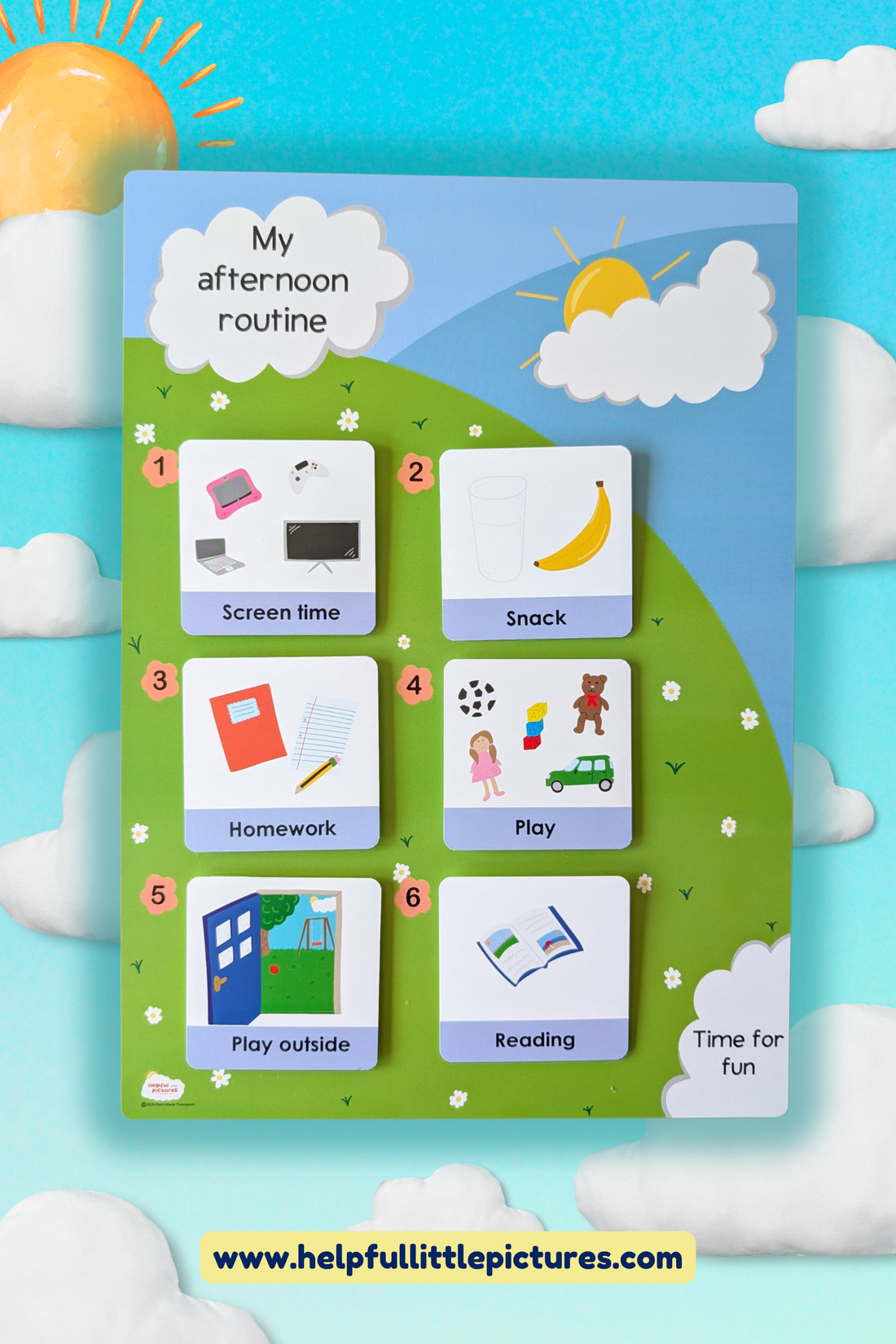
Afternoon Doom - turning chaos to calm!
Share
Creating Calm & Structure for Afternoons with Kids
The school run is done, shoes are kicked off, and bags are dropped in the hallway—but what next? Afternoons can easily become a whirlwind of tiredness, hunger, and demands, leaving everyone feeling overwhelmed. Having a predictable structure after school can make all the difference, helping kids transition smoothly from the classroom to home life while still allowing for rest, play, and connection.
The After-School Transition: Why It’s Tricky
The shift from school to home is a big one for children. At school, their day is structured, expectations are clear, and their brains are constantly engaged. When they come home, they suddenly have more freedom, which can sometimes lead to restlessness, frustration, or even meltdowns—especially if they’re neurodivergent or struggle with transitions.
A consistent routine helps kids feel secure, reduces power struggles, and makes the rest of the evening flow more smoothly. The key is to balance structure with flexibility, allowing enough time for what they need (homework, food, and connection) and what they want (play and downtime).
Refuelling After School: Food for Fuel
Most children come home from school absolutely starving! Even if they’ve had lunch, their energy levels are likely dipping, which can bring on changes in behaviour that can be challenging! A well-timed snack can do wonders for their mood and focus. Instead of letting them raid the cupboards, try having a balanced snack ready—something with protein and healthy carbs to keep them going.
A few quick and easy options:
🍏 Apple slices with peanut butter
🧀 Cheese and crackers
🍌 Banana with yoghurt
🥕 Veggie sticks with hummus
If your house is anything like ours, you will still have the cries for junk! We always have a wee treat alongside a healthy -ish snack to keep the peace!
By having snack time as a fixed part of your afternoon routine, you’re not just filling hungry tummies—you’re also creating a predictable moment that signals the transition from school to home mode.
Breaks for the Brain: The Importance of Downtime
After spending the whole day concentrating at school, kids need time to decompress. Jumping straight into homework might seem productive, but for many children, a break first is essential.
This could be:
🌳 Playing outside for 20 minutes
📚 Reading a book
🎨 Doing a creative activity
😌 Simply lying on the sofa and resting
The key is to offer choices within a structured routine—so your child knows they always get a break, but what they do with it is up to them.
Balancing Homework & Playtime
Every family approaches homework differently, but having a set time for it as part of your afternoon routine prevents last-minute stress. Some kids work best when they do it right after their break, while others need a longer wind-down before they can focus again.
If your child resists homework, try:
✔ Breaking it into small chunks with short breaks
✔ Using a timer (e.g., 20 minutes on, 5 minutes off)
✔ Encouraging movement between tasks (jumping jacks, stretching, etc.)
✔ Sitting with them for support and encouragement
Equally important is free play—kids need time to relax and do what they enjoy, whether that’s building LEGO, playing with toys, or running around outside. Making sure there’s enough time for both homework and play ensures a good balance between responsibility and fun.
Parental Connection: The Key to a Happy Afternoon
With busy schedules, it’s easy to focus on ticking off the to-do list, but connecting with your child is one of the most valuable things you can do in the afternoons. Even 10–15 minutes of undivided attention—whether it’s chatting about their day, playing a quick game, or snuggling up for a story—can have a huge impact on their emotional well-being.
Some simple ways to connect:
💬 Ask about the best and hardest part of their day – sometimes questions after a long day at school can be hard for kids, something that works for us is when I speak about my day without asking any questions, it’s a great low demand way of opening a conversation and usually prompts a full blown account of the wee mans day!
🎲 Play a quick game together
📖 Read a short book before moving on to other tasks
🤗 Give them a cuddle or sit close while they unwind
How to Create a Predictable Afternoon Routine
The key to a smooth afternoon is predictability—when kids know what to expect, they feel more in control and less resistant to transitions. A visual routine can be a great way to keep things on track without constant reminders or battles.
Our Afternoon Routine Chart lays out each step clearly, helping children move from one part of their day to the next with ease. It encourages independence, reduces nagging, and makes afternoons feel less chaotic for everyone.
A simple routine might look like this:
1️.Snack time 🍎
2️.rain break 🎨
3️.Homework 📚
4️.Playtime 🏃♂️
5️.Dinner 🍽️
Every family’s routine will look different, but the key is consistency—finding a rhythm that works for you and sticking with it.
Before I go…
Afternoons don’t have to feel rushed or chaotic. By creating a predictable structure with time for food, rest, play, and connection, you can turn the after-school hours into a calm and enjoyable part of the day.
If you’d love a little help in making your afternoons run smoother, our Afternoon Routine Chart is a fantastic visual tool to support independence and reduce stress—for both kids and parents. Because when afternoons feel easier, the whole evening flows better. 💛
How do you structure your afternoons? Share your tips in the comments!
